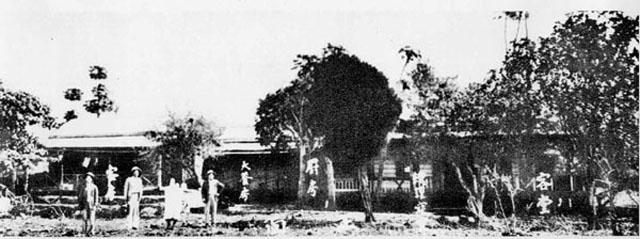Most of the attention is placed on his famous brother, however several historians feel that without the fostering and support, the younger brother would not have succeeded in his endeavor.
The older brother, born in 1854, was named Sun Dezhang, he was also known as Sun Ahmi and Sun Mei (we’ll use the latter for the rest of the story.)
The younger brother, born in 1866, was known as Tai Cheong, Tai Chu, Sun Wen and Sun Deming (we’ll use the Cantonese pronunciation of the name he was given at baptism (in 1884) – pronounced Yat-sen.)
Gold was discovered in 1849 in western American state of California. The Chinese called USA the “Flowery Flag Country.” Thousands of Chinese immigrants had been flocking into California. By 1855, there were 40,000-Chinese or one-sixth of state’s population in the California.
The Sun’s two uncles, Sun Xue-cheng and Sun Guancheng, had gone earlier to seek their fortune in the California goldfields. Xuecheng died at sea near Shanghai in 1864 and Guancheng died in 1867 at 39 in California. (Zanella)
Despite their untimely deaths, the attraction of a better life was kept alive for the Sun brothers by their uncles’ mothers who told stories of their sons while living in the Sun household.
At 17, following his father’s urging, Sun Mei went off to Hawaiʻi – to escape from the local poverty and poor agrarian conditions of his home. Another of his uncles had a business in Honolulu and he took Sun Mei back to Hawaiʻi with him in 1871. (Zanella)
Sun Mei began a career as a hired vegetable gardener. Before the end of the year, he went into business for himself by leasing land at ʻEwa, Oʻahu. He cleared the land and planted rice. He began to prosper after a short period of time and opened a store on Nuʻuanu Street in Chinatown.
Then, he returned to China to find a bride. While there, he recruited over a hundred men to work in Hawaiʻi’s new sugar plantations (at the time, the growing sugar plantations needed field labor.)
He moved to Maui and went from labor broker to shop owner, in 1881 opened a grocery store in Kahului (“De Chong Long” (named after his son,) dealt in real estate, then established a ranch in Kamaole, where he was as skilled at riding and roping as any man on the mountain. (Maui Magazine)
Some called him the “Maui King” and the “King of Kula,” partly for his larger-than-life persona and partly for the size of his cattle ranch – it spread all the way from Polipoli Forest to the shoreline at Kihei. (Wood)
Sun Mei was one of the wealthiest Chinese in Hawaiʻi during his time (at the turn of the century.) He had owned almost 100-properties on Oʻahu and Maui.
He arranged for his younger brother to join him; in 1879, then 13 years of age, Yat-sen journeyed to Hawaiʻi to join his older brother. The younger Sun entered ʻIolani at age 14. (ʻIolani)
In Sun Yat-Sen’s four years in Hawaiʻi (1879-1883), he is said to have attended three Christian educational institutions: ʻIolani College, St. Louis College and Oʻahu College (Punahou School.)
Shortly after, Yat-sen left Hawaiʻi and returned to China to initiate his revolutionary activities in earnest. The funding of the First Canton Uprising mainly came from the Chinese in Hawaiʻi, including his brother (that uprising effort failed.)
On another visit to Hawaiʻi (in 1903,) Sun reorganized the Hsing Chung Hui into Chung Hua Ke Min Jun (The Chinese Revolutionary Army) in Hilo. After reorganization, the group spread all over China and rallied all the revolutionists under its wings.
From 1894 to 1911, Yat-sen traveled around the globe advocating revolution and soliciting funds for the cause. At first, he concentrated on China, but his continued need for money forced him elsewhere. Southeast Asia, Japan, Hawaii, Canada, the United States, and Europe all became familiar during his endless quest. (Damon)
Through the years, Sun Mei eventually sold all of his properties and businesses to support his brother’s revolution. Sun Mei sold his ranch in 1908; now the land belongs to the Haleakala Ranch Company, which uses the land to breed cattle.
Sun Mei returned to his ancestral village. Later he built a house and lived in Kowloon across from Hong Kong. His house became a place where the revolutionists met. Sun Mei had given his whole fortune to his younger brother’s revolution.
Eventually (in 1911,) Sun Yat-sen overthrew the Qing Government and established the Republic of China. In 1912, Sun Yat-sen was elected the first President of the Republic of China.
























































